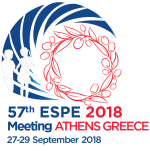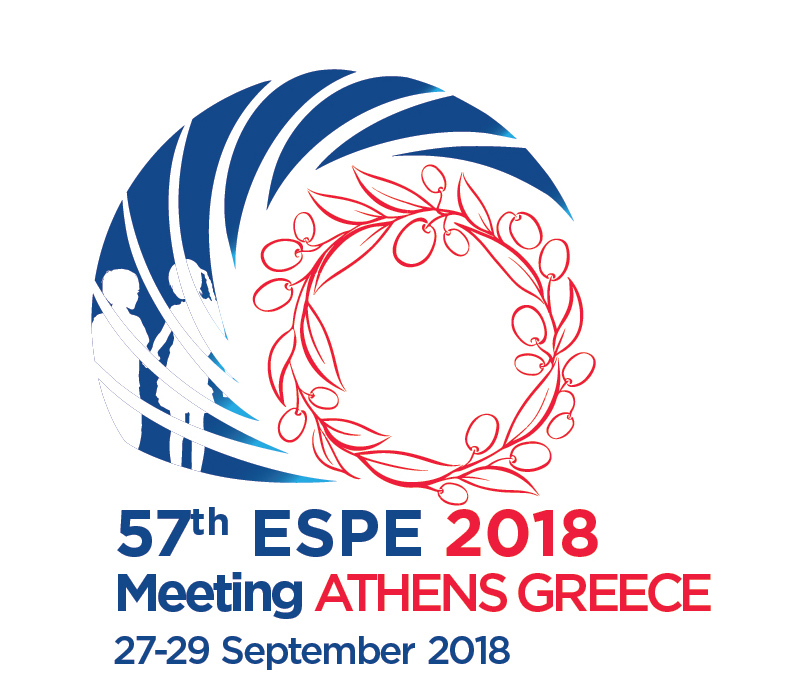
57th Annual ESPE
Athens,
Greece
27 Sep 2018 - 29 Sep 2018

Poster Presentations
Fetal, Neonatal Endocrinology and Metabolism P3
hrp0089p3-p170 | Fetal, Neonatal Endocrinology and Metabolism P3 | ESPE2018
A Rare Case of Congenital Hyperinsulinemina with ABCC8 Missense Mutation Presenting with Focal Pancreatic Lesion
Sethi Aashish , Ramachandran Smita , Kochar Inderpal
hrp0089p3-p171 | Fetal, Neonatal Endocrinology and Metabolism P3 | ESPE2018
Comparison of Metabolic Parameters of Children’s Blood Depending on the Level of Mother’s Glycemia During Pregnancy
Masel Alisa , Kaprior Ekaterina , Polyanskaya Alexandra , Nikitina Irina
hrp0089p3-p172 | Fetal, Neonatal Endocrinology and Metabolism P3 | ESPE2018
Forty patients with persistent, non-focal congenital hyperinsulinism: Urgent need for new treatment modalities
Rasmussen Amalie Greve , Melikian Maria , Globa Evgenia , Detlefsen Sonke , Rasmussen Lars , Petersen Henrik , Brusgaard Klaus , Rasmussen Annett Helleskov , Christesen Henrik
hrp0089p3-p173 | Fetal, Neonatal Endocrinology and Metabolism P3 | ESPE2018
Outcome of Eight Patients with Congenital Hyperinsulinism (CHI) Studied with 18[F]Dihydroxyphenyl-Alanine Positron Emission Tomography Imaging (18F-DOPA-PET-CT) in Argentina
Tangari Saredo Ana , Flanagan Sarah , Alonso Guillermo , Caceres Juan , Troiano Marina , Bignon Horacio , Bastianello Maria , Graciela Del Rey , Ignacio Bergada
hrp0089p3-p174 | Fetal, Neonatal Endocrinology and Metabolism P3 | ESPE2018
Congenital Hyperinsulinism and Maple Syrup Urine Disease a Challenging Combination
Shidhani Azza Al , Murshedi Fathiya Al , Yaarubi Saif Al , Thihli Khalid Al , Ullah Irfan
hrp0089p3-p175 | Fetal, Neonatal Endocrinology and Metabolism P3 | ESPE2018
Neonatal Diabetes Mellitus in Vietnam National Children Hospital
Ngoc Can Thi Bich , Dung Vu Chi , Thao Bui Phuong , Khanh Nguyen Ngoc , Mai Do Thi Thanh , Ellard Sian , Jayne Houghton , Flanagan Sarah , Mackay Deborah , Hoan Nguyen Thi
hrp0089p3-p176 | Fetal, Neonatal Endocrinology and Metabolism P3 | ESPE2018
Axillary Temperature Relation to Blood Serum Insulin-like Growth Factor-I in the Not-life-Threatened Newborn: Relevance of Preterm Birth
Terzi Cesare , Blum Werner F. , Magnani Cristiana , Tridenti Gabriele , Cerioli Andrea , Riani Marco , Garavelli Lidia , Bernasconi Sergio , Angelis Gian Luigi De , Virdis Raffaele , Banchini Giacomo
hrp0089p3-p177 | Fetal, Neonatal Endocrinology and Metabolism P3 | ESPE2018
Birth Estimated Brain Weight Relation to Ratios between Insulin-like Growth Factor-II and Insulin-like Growth Factor Binding Protein-3 in the Not-life-threatened Newborn: Relevance
Terzi Cesare , Virdis Raffaele , Magnani Cristiana , Tridenti Gabriele , Cerioli Andrea , Riani Marco , Chesi Elena , Bernasconi Sergio , Angelis Gian Luigi De , Blum Werner F. , Banchini Giacomo
hrp0089p3-p178 | Fetal, Neonatal Endocrinology and Metabolism P3 | ESPE2018
Congenital Hyperinsulinism in Children with Beckwith-Wiedemann Syndrome
Gubaeva Diliara , Melikyan Maria , Didi Mohammed , Senniappan Senthil
hrp0089p3-p179 | Fetal, Neonatal Endocrinology and Metabolism P3 | ESPE2018
Comparison of the Phenylketonuria Phenotypes in Qazvin Province Before and After Neonatal Screening Until 2017
Saffari Fatemeh , Taherkhani Camelia , Esmailzadehha Neda , Homaei Ali
hrp0089p3-p180 | Fetal, Neonatal Endocrinology and Metabolism P3 | ESPE2018
From Hypoglycemia to Hyperglycemia
hrp0089p3-p181 | Fetal, Neonatal Endocrinology and Metabolism P3 | ESPE2018
Population Screening of Hypophosphatasia. A Metabolopathy to Consider. National Multicentric Study
Aldamiz-Echevarria Koldo , Diez-Lopez Ignacio , Arranz Leonor , Garcia-Barcina MJ
hrp0089p3-p182 | Fetal, Neonatal Endocrinology and Metabolism P3 | ESPE2018
Dumping Syndrome in a Neonate with Esophagical Atresia Surgery
Gonzalez Angelica , Jaramillo Carolina , Espejo Jennyfer Monroy
hrp0089p3-p183 | Fetal, Neonatal Endocrinology and Metabolism P3 | ESPE2018
Diagnosis and Treatment of Persistent Hyperkalemia in Newborn Twins – Rare Case Report of Gordon Syndrome
Zhang Jun , Ma Huamei , Li Yanhong , Guo Song , Du Minlian , Yu Muxue , Li Xiaoyu
hrp0089p3-p184 | Fetal, Neonatal Endocrinology and Metabolism P3 | ESPE2018
Mutation in UCP2 Gene: A Rare Cause of Hyperinsulinemic Hypoglycaemia Syndrome in a Small-for-Gestational Age Newborn
Clemente Maria , Yesquen Pamela , Campos Ariadna , Mogas Eduard , Fernandez Monica , Yeste Diego
hrp0089p3-p185 | Fetal, Neonatal Endocrinology and Metabolism P3 | ESPE2018
Hyperinsulinemic Hypoglycaemia Syndrome in Small-for-Gestational Age Newborns: Clinical Characteristics and Genetic Study
Yesquen Pamela , Clemente Maria , Campos Ariadna , Fernandez Monica , Castillo Felix , Yeste Diego
hrp0089p3-p186 | Fetal, Neonatal Endocrinology and Metabolism P3 | ESPE2018
Pediatric Insulinoma: A Case Report
Dissaneevate Pathikan , Patarapinyokul Sakda , Khaimook Araya
hrp0089p3-p187 | Fetal, Neonatal Endocrinology and Metabolism P3 | ESPE2018
Mutations in Indian children with Neonatal Diabetes
Ramachandran Smita , Sethi Aashish , Kochar Inderpal
hrp0089p3-p188 | Fetal, Neonatal Endocrinology and Metabolism P3 | ESPE2018
Weight Outcome in Infants with Prolonged Hyperinsulinemic Hypoglycemia Treated with Diazoxide vs Those with Spontaneous Resolution
Chandran Suresh , Rajadurai Victor Samuel , Yi Chng Hui , Jinjie Lin , Lim Joyce , Peng Fabian Yap Kok
hrp0089p3-p189 | Fetal, Neonatal Endocrinology and Metabolism P3 | ESPE2018
Neonatal Hyper- and Hypoglycaemia; Widening the Clinical Phenotype of Transient Neonatal Diabetes Mellitus due to 6q24 Methylation Defects
Taylor-Miller Tashunka , O'Connell Michele , Sabin Matthew
hrp0089p3-p190 | Fetal, Neonatal Endocrinology and Metabolism P3 | ESPE2018
Clinical and Molecular Genetic Characterization of Two Patients due to Mutations
Ding Yu , Li Niu , Chang Guoying , Li Juan , Yao Ruen , Shen Yiping , Wang Jian , Huang Xiaodong , Wang Xiumin
hrp0089p3-p191 | Fetal, Neonatal Endocrinology and Metabolism P3 | ESPE2018
Transient Central Hypothyroidism due to Maternal Graves’ Disease
Izumita Yukie , Abe Yuki , Tsukano Shinya



